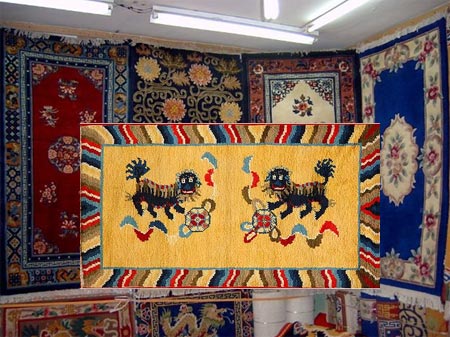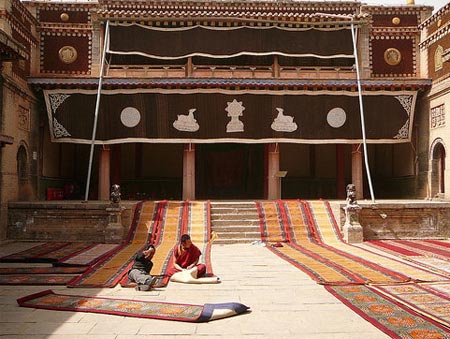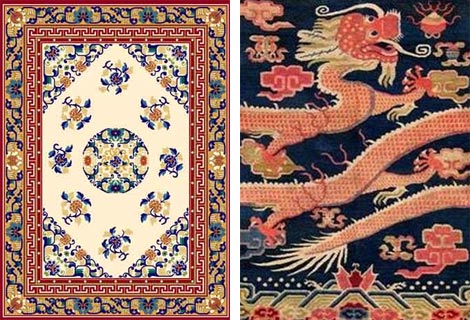
Handmade woolen rugs have been part of the Tibetan culture for hundreds of years. They are an integral part of the daily life and Buddhist practices of typical Tibetan households. These beautiful pieces are highly valued and are passed on from generation to generation. In old times a young woman might spend months weaving a set to bring into her new home upon marriage.
According to different sizes, those rugs larger than 18 square meters are called floor carpets, while smaller ones are called "kadian". Traditionally, kadians are used for sitting or sleeping on, rather than for spreading out as floor coverings. They are usually about 0.9 meters by 1.8 meters in size; this size fits the function as both a seating area and bed in many Tibetan houses. There are also smaller rugs, sometimes called meditation rugs, which are just the right size for a person to sit on.

What makes authentic Tibetan textiles unique is its combination of traditional methods that produces rugs that can last for centuries, and premium quality wool sheared from Tibetan sheep raised high on the Tibetan Plateau.The wool is hand-spun into brilliant colors made from vegetable dyes and various hues of yarn can be woven into traditional motifs, symbols and designs. In modern times, new patterns and designs complement contemporary and traditional home decor. Rug making is a traditional Tibetan craft. The area of Gyangze, with a history of 600 years in rug making, has long been famous as "the home of kadian" in and outside China, well known for both its singular weaving technique and bright colors.
